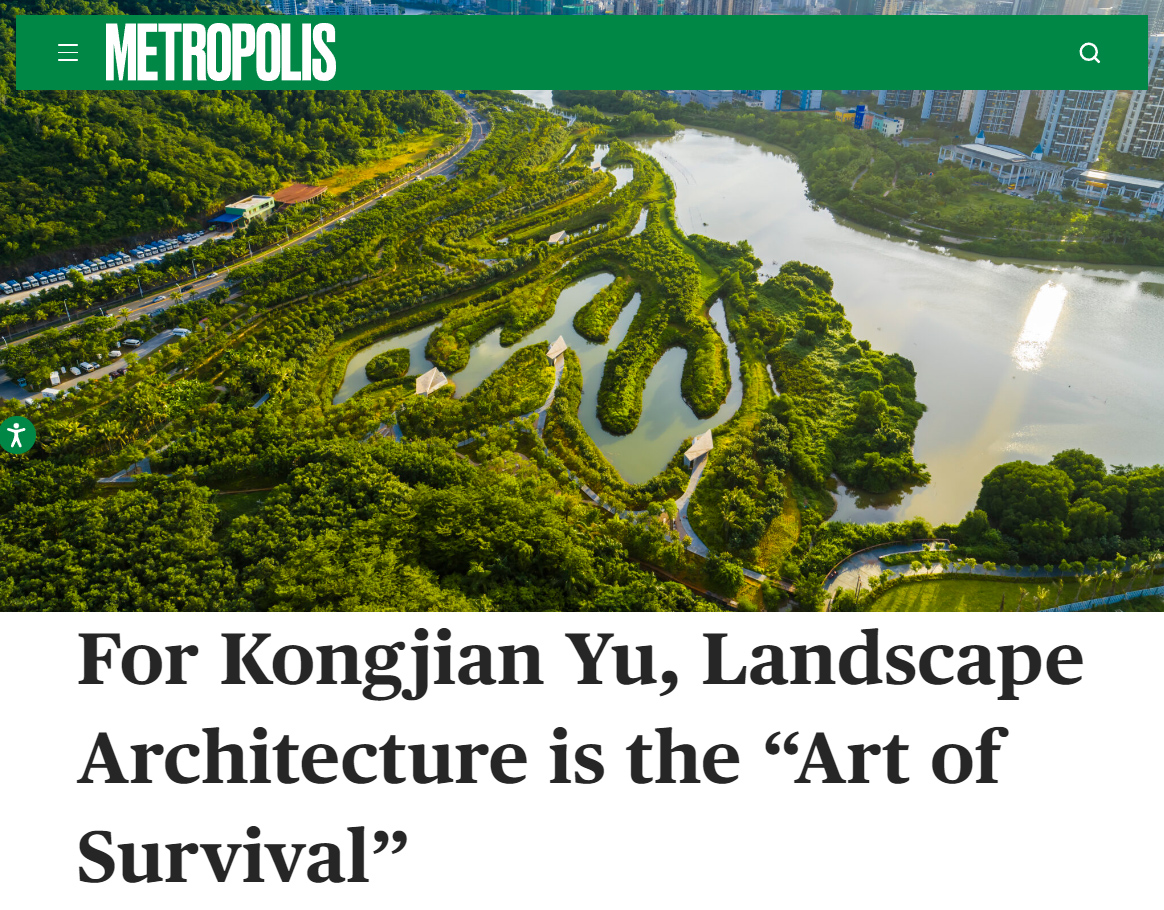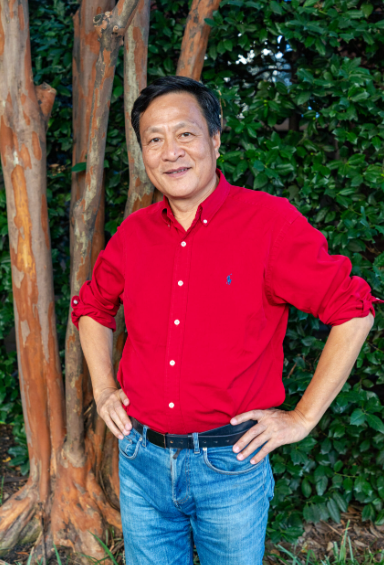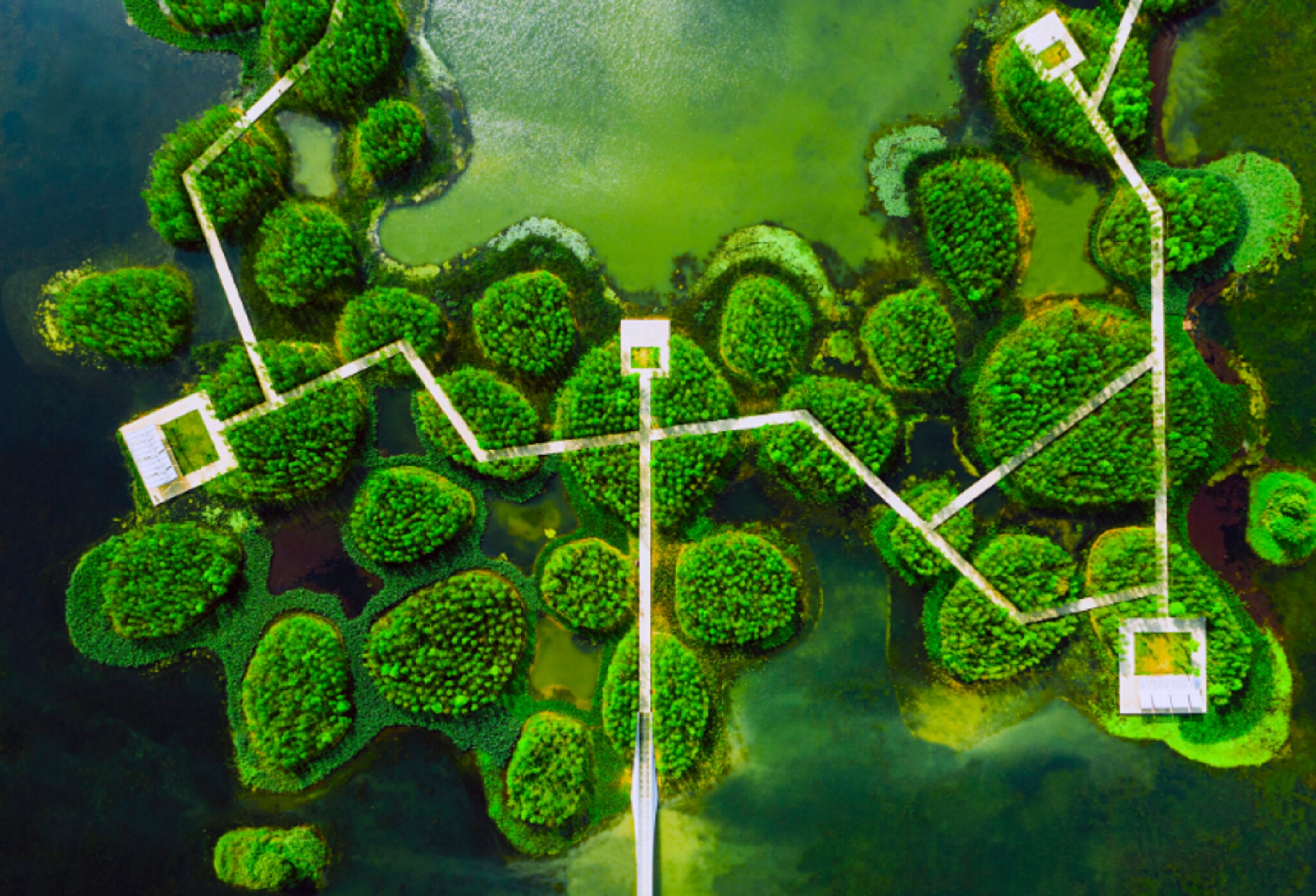Metropolis: 俞孔坚-景观设计是“生存的艺术”

Kongjian Yu is one of China’s most important landscape architects. This year alone he has been awarded the Cooper Hewitt National Design Museum Award in Landscape Architecture and the Oberlander International Landscape Architecture Prize, an initiative of the Cultural Landscape Foundation. For more than 25 years, Yu has been a practitioner of nature-based solutions to urban planning. He is the dean of the College of Architecture and Landscape Architecture at Peking University and the founder of Turenscape, a Shanghai-based landscape firm with over 400 employees. His Sponge City concept has been implemented in more than 250 cities throughout China.

2023 Oberlander Prize Laureate Kongjian Yu. Photo © Barrett Doherty courtesy The Cultural Landscape Foundation.
What is a Sponge City? Yu’s solution is a type of urban planning that mediates water absorption and storage, thereby increasing the city’s resilience to floods. It consists of creating green infrastructure, permeable roads, and ponds to collect runoff and overflow to manage water productively, retaining water for future use, cleaning polluted water bodies, and improving natural ecosystems. Each Sponge City design must be unique, considering each locale’s specific ecology, geology, hydrology, and culture. Yu calls his designs “agrarian aesthetic”, inspired by Chinese peasant agricultural tradition that has persisted for over two millennia. Opposed to landscape as mere ornamentation, he values functionality first and seeks to work with nature to create green infrastructure.
Kongjian Yu traveled to the United States to give the Sylvester Baxter Lecture at GSD, and for this year’s Copper Hewitt National Design Museum’s Award Ceremony. On October 1, Yu met with METROPOLIS to discuss his ambitious vision and convictions on how landscape architecture, as a land-based profession, has the power to provide the means to adapt and mitigate climate change “to heal the planet.”
This interview has been edited and condensed for clarity.

Nanchang Fish Tail Park, Nanchang, Jiangxi Province, China, 2021. Photo © Turenscape.
How do you define the role of landscape architecture in this new era of climate change?
Landscape architecture is the single most important land-based profession. I will quote Ian McHarg when he said that the landscape architect is a conductor of all the sciences and the arts that can be applied to the landscape medium. Landscape architecture is a means of global service operating in a zone we call the biosphere.
It combines science, art, and engineering so that man and nature can be in a harmonious state. Landscape architecture, a nature-based practice, is in a critical professional position to deal with climate adaptation and mitigation. Global natural surfaces that have been depleted like rivers, lakes, marshes, and so on, must be recovered, redesigned, or adapted.
I define landscape architecture as a profession of the art of survival. If you have a survival issue, you must consider making your design profession holistic and have multi-functional goals.
What is wrong with gray infrastructure or the “forest of cement,” as you have called it in the past?
When we talk about gray infrastructure, we talk about road, pipe, and water drainage systems which are based on artificial human technology that uses concrete. This leads to three problems. First, concrete creates too much carbon emission. Second, the systems fail because of climate change; they cannot adapt to different climate situations. Finally, they are disruptive because they cut off the relationship between man and nature. Think of flood walls, think of water going through tunnels and pipes, and having no relationship with human beings and other species. Gray infrastructure is disconnected and unsustainable.
This kind of infrastructure destroys the balance of the biosphere. Imagine how much water has been discharged from its natural course. In Central China, groundwater has dropped 82 feet in the past 50 years. The gray infrastructure has destroyed our planet. It is everywhere, and like a toilet, flushes away flood water. The lakes dry up, the ground sinks, and everything gets messed up. I have this vision that if you can save a village and a city, you can save the planet. We must find alternatives or a way to minimize gray infrastructure and maximize nature-based solutions.
We are not throwing away past civilization, but we have a more science-based and nature-based understanding of our cultural heritage and ancient wisdom. This new civilization is nature-based, wiser than the past primitive agricultural era, and much more ingenious than the industrial revolution, which was against nature. And we are coming to a new epoch where men and nature become friends.
You have had a life that suggests an epic journey. You went to Beijing to study landscape gardening with prominent Chinese teachers, then got your doctorate at Harvard, where you created theSponge City concept. In 1997 you returned to China, established the College of Architecture and Landscape Architecture at Peking University, and founded your own architecture practice. You have lectured tirelessly for decades all over China about Sponge City and, in 2013, got the Chinese government to implement it nationwide. What is the driving force behind all of these endeavors? And what is your ultimate goal?
It certainly comes from a personal ambition. In the past centuries, we have been trapped in a misconception that industrial technology, in particular gray infrastructure, and chemicals, can solve humanity’s problems. But based on my village experience in working with nature, I understand that the industrial revolution, while having brought so many blessings for human beings, at the same time is destructive, and is killing the natural systems. So, I wanted to make a change.
You must solve the problem from down in the earth. I have this vision of a better world and a better planet. I have my own ideology and I have this utopia in my mind: I want this globe to be as beautiful, harmonious, and healthy as a village. How do we balance this? That is why I proposed the idea of the sponge city. Then I extended it into sponge land, sponge region, and sponge watershed. Now I’m thinking this can be a sponge planet. If you can make a planet like a sponge, you retain, slow down, and adapt water, you can really create a resilient planet.
Source: https://metropolismag.com/viewpoints/kongjian-yu-interview/
